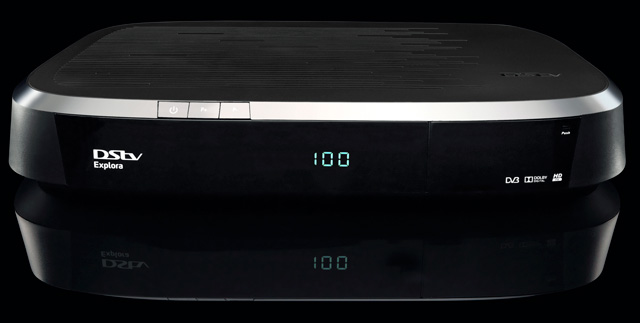
MultiChoice, the owner and operator of pay-television service DStv, intends opening a data pipe on its Explora personal video recorder (PVR) decoder this year, paving the way for consumers to be able to watch on-demand services via the Internet.
Group CEO for broadcast technology Gerdus van Eeden says MultiChoice is developing a Wi-Fi dongle, which subscribers will be able to connect to the Ethernet port on the company’s high-end Explora PVRs, with the idea that they will be able to use it to watch the company’s online video-on-demand (VOD) services.
Until now, Explora users have only been able to use the PVR to watch on-demand and catch-up services pushed via satellite to the machine’s hard drive. This has meant that the available material has been limited by the size of the storage capacity of the decoder.
 Van Eeden says one of the first services that will be enabled through the Wi-Fi dongle will allow consumers to set recordings from a smartphone or tablet application, or from the Web. This will allow people to record shows when they’re away from home. It will also allow viewers to rent BoxOffice movies without first having to send a long string of characters to MultiChoice via an SMS.
Van Eeden says one of the first services that will be enabled through the Wi-Fi dongle will allow consumers to set recordings from a smartphone or tablet application, or from the Web. This will allow people to record shows when they’re away from home. It will also allow viewers to rent BoxOffice movies without first having to send a long string of characters to MultiChoice via an SMS.
Once those services are deployed, the Explora become what Van Eeden calls an “OTT device” — offering “over the top” services like video on demand to DStv users. He says it’s possible this service could still be launched before the end of the year.
MultiChoice plans to launch the online VOD service on the Explora PVR despite that fact that South Africa has poorly developed fixed-line broadband infrastructure. “Our addressable market is small, but we know we have to do it,” Van Eeden says.
Though no pricing for the Wi-Fi dongle is available yet, he says it “won’t be an expensive device”, priced similarly to most Wi-Fi dongles.
Meanwhile, MultiChoice has provided more details behind its decision to commission a new satellite from Intelsat. Intelsat 36, which will be rechristened Intelsat 20B, is meant mainly as a backup to Intelsat 20 (in future to be called Intelsat 20A), which the pay-TV operator began using in 2012. The additional capacity will also allow MultiChoice to expand the number of channels it offers its subscribers and to launch more channels in high-definition format, says Van Eeden.
Intelsat 20A and 20B will sit in roughly the same position in space, meaning existing DStv dish installations will receive signals from both without the need for any modifications.
“It doesn’t even know the transmission is coming from two separate satellites,” Van Eeden says.
He says MultiChoice is already beginning to run out of capacity on Intelsat 20A, but the main reason for commissioning it is for backup purposes. “[Intelsat 20A] is a single point of failure.”
If satellite 20A fails for some reason, it could take up to 10 days to relocate a backup satellite from another orbital position. “We decided to invest heavily and get a co-located satellite.”
Both satellites have a lifespan of 20 years. Intelsat 20B will be launched in the second half of 2016. — © 2014 NewsCentral Media
- See also: DStv’s new PVR: the inside story

